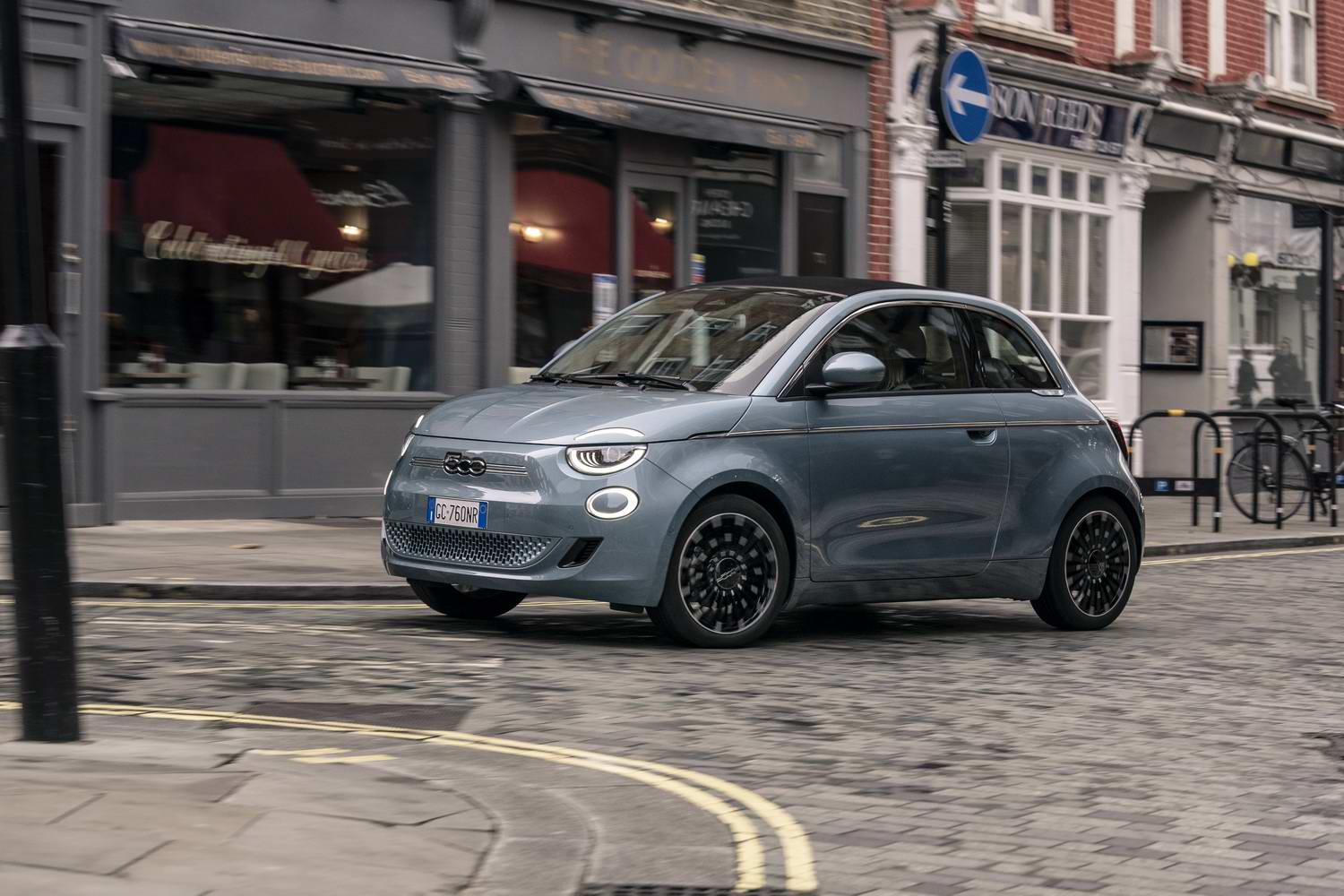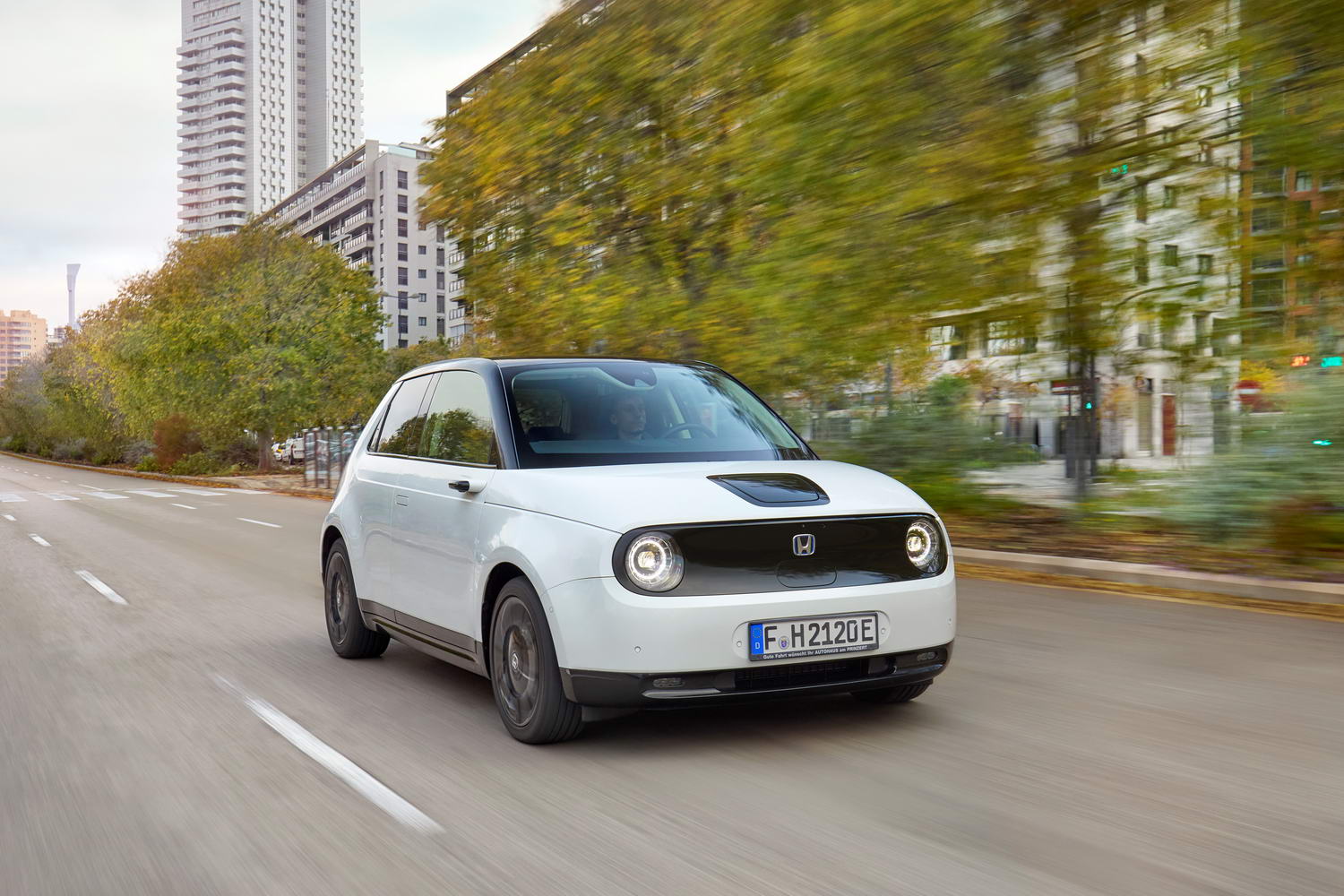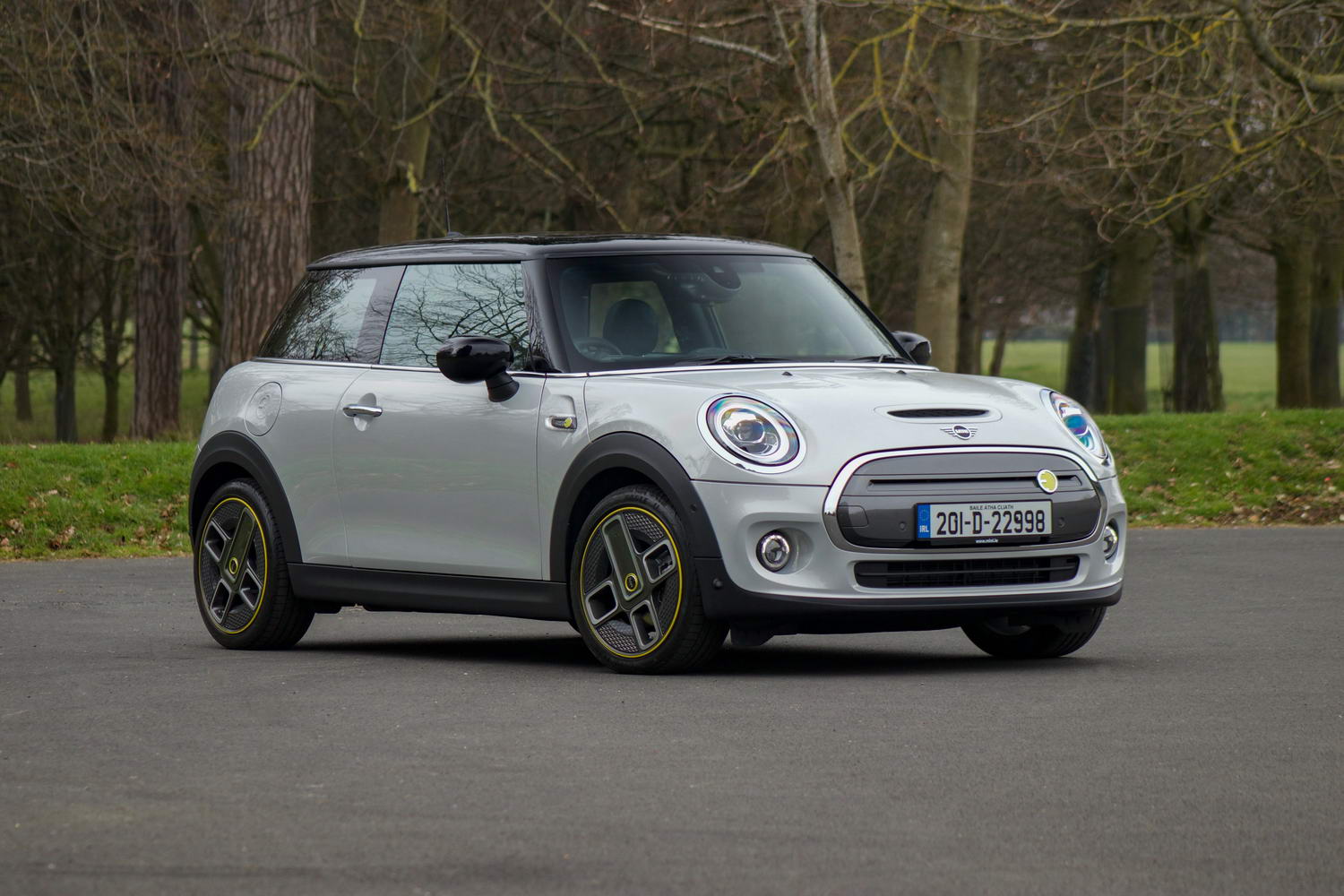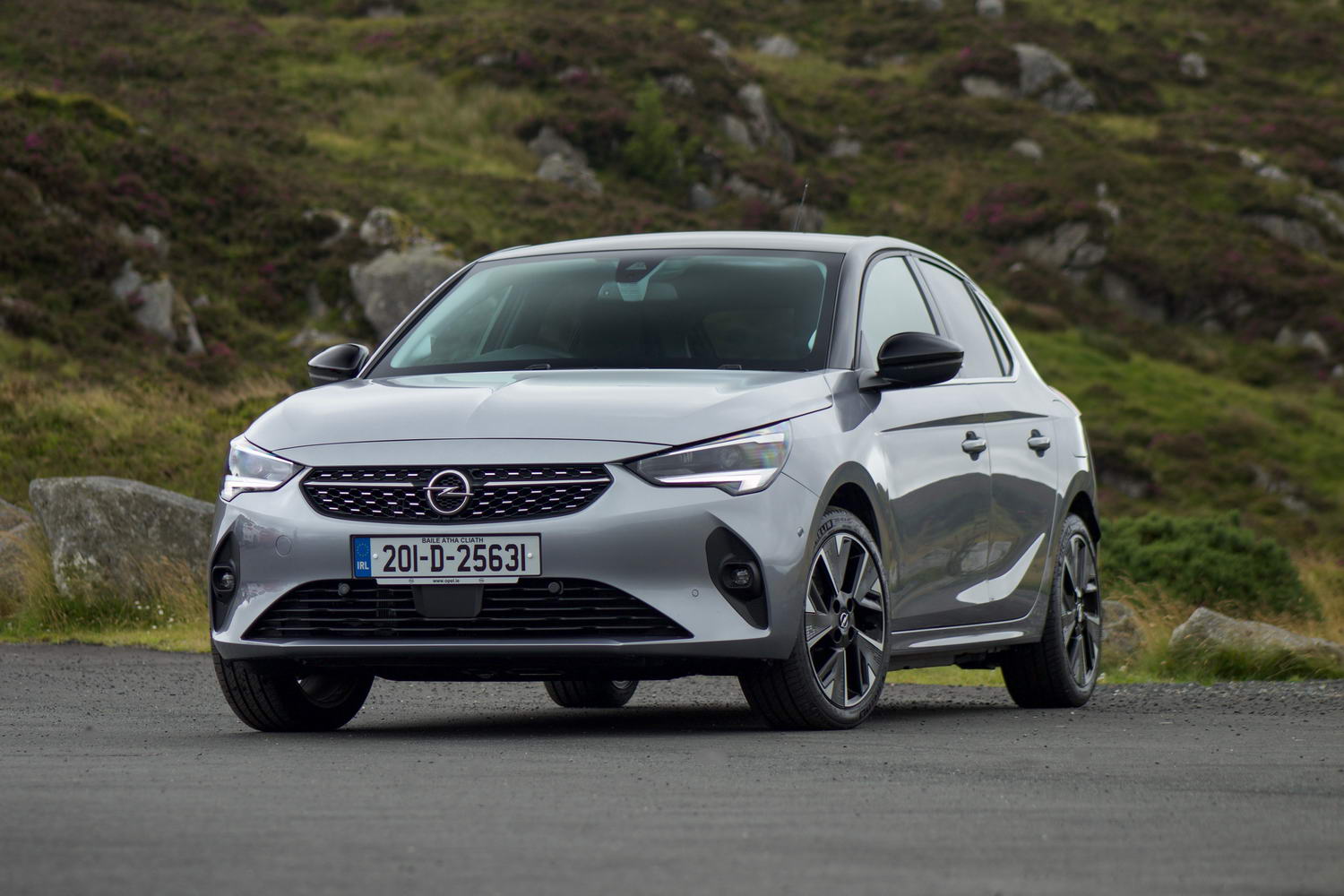Making its best-selling model an electric-only car - is this a ridiculously risky move from Fiat with the all-new 500? No, not when this switch to zero emissions has been as supremely well-executed as this. By far and away, this electric vehicle (EV) is the best modern-day Fiat 500 of the lot and everything this stylish little run-around should always have been. It's brilliant.
In the metal
At once comfortingly familiar and yet obviously brand new, Fiat hasn't drastically altered the appearance of the 500, but you're well aware it's not simply a facelift of the outgoing model, which has basically been in production for 13 years. For the new 500e - Fiat's not actually officially calling it this, by the way, but if you look at its '500' badging you'll see that there's an 'e' in the second zero - there are chunkier rear light clusters that remove the triangular hoop affairs seen on facelifted 500s since 2016, while at the front a smoothed-off nose reflects the reduced cooling requirements of the zero-emission drivetrain, and also allows for a set of headlights that make the Fiat look as if it is singularly unimpressed with the world. It's a great-looking thing, as has ever been so, and as it can even pull off bold colours like Rose Gold, then we have to say the exterior design wins major plaudits.
Our test vehicle was the 500 Cabriolet body shell, with the full-length folding fabric top that lowers all the way in 25 seconds, even on the move at speeds of up to 100km/h. You can have the 500 as a regular hatchback; although, go for the open-top variant and Fiat claims this is the first electric four-seat convertible in the world. Never mind that, though, you want to climb aboard the 500, because its cabin is exceptional. That comforting exterior disguises the fact that the 500 has grown in all dimensions over its predecessor. At 3,623mm long, 1,683mm wide, 1,527mm tall and with a 2,322mm wheelbase, it is (respectively) 61mm, 56mm, 29mm and 22mm more commodious in these aspects than the old car. It also has a wider track, broadened by 56mm, and all of this growth in size aims to benefit the Fiat's occupants. To a degree, it has worked. Naturally, the rear seats are still pretty compact items and the boot stays at 185 litres, but there's definitely more space in the front, with greater elbow-room for the driver and adjacent passenger, and six-footers can climb in the back... provided some shuffling of the front seats takes place first, naturally.
It's not the vastness of the cabin that impresses most, however, but the unstinting quality of it. Our car was a top-spec model with the new Uconnect 5 infotainment system presented on a gorgeous 10.25-inch screen. While it is a bit slow in its response to touch, the graphical representation on this display is night-and-day better than anything Fiat has served up before. And as it supports wireless Apple CarPlay and Android Auto systems, then you can hook up your preferred smartphone as you wish. Bear in mind that lesser models run a seven-inch infotainment display, while a basic entry-level car (not confirmed for Ireland) does away with this interface entirely and replaces it with cradle for your smartphone, in the fashion of the Volkswagen up!.
Yet it's touches like the Turin skyline (to celebrate the fact that production of the Fiat 500 is being shifted back to the Mirafiori plant located in the northern Italian city) being embossed into the base of the centrally mounted wireless smartphone charging pad, or the E-Latch buttons mounted high on the door cards, or the 'Nuova' 500 graphic with 1957 legend in the door-handle pulls, that all delight the most. The dash pad can be painted body colour on higher-spec cars to further heighten the ambience, there's a seven-inch TFT instrument cluster on all models that is superb and, glory be, something is making a comeback in the motoring world and we, for one, are rather glad it is. And that something is the two-spoke steering wheel. Marvellous.
Driving it
It doesn't take you long behind the wheel of the Fiat 500 to realise it's going to be fantastic. Bear in mind this is an electric city car, one that will surely spend the vast majority of its time in urban and semi-urban environments. Therefore, low-speed ride and refinement should be maximised at the expense of any notable high-speed talents. And, despite the fact the 500 can now ride on alloys as big as 17 inches in diameter, the way it delicately and effortlessly picks its way across the cratered surfaces of a road on your typical inner-city industrial estate is quite wonderful.
In short, what Fiat has done here is ensured that the removal of the internal combustion engine, which takes much of the noise, vibration and harshness out of a vehicle, has been reinforced with beautifully judged springs and dampers, so that not only is the 500 astonishingly quiet but it's massively cultured, too. For a small, relatively lightweight car (the 500 clocks in at 1,290kg as a hatchback and 1,330kg as this soft-topped model), the Fiat rides with a dignity and comportment that is most at odds with its status as a value offering at the entry levels of EV ownership.
Which is not to say that it struggles out on the open road, because it doesn't. In fact, its ride never really deteriorates significantly at all, and both its body and wheel control are equally, deeply impressive. It's also fabulously potent, that 220Nm electric motor making short work of the 500's diminutive frame to allow it to scoot about frantically on city streets, smashing out blistering 0-50km/h runs that leave drivers of white vans infuriated about being done off the lights by a metallic pink Fiat 500 Cabriolet, but yet also allowing the 500 to pull off safe open-road overtakes in an instant. It gets to 100km/h or 110km/h so easily from rolling speeds that it's a wonder the motor in the chassis isn't more powerful than the modest 118hp Fiat claims.
It's not quite perfect dynamically, as its chassis starts to betray its electric origins in tighter corners, there being a pronounced wobble to the shell if you breach the limits of grip. But again, this sort of driving tomfoolery is not going to be commonplace in the normal life of a 500. And as the steering, which is light but so faithful, and the brakes are both exceptional, this isn't a major drawback.
Oh, and talking of the brakes, there are three drive modes to the 500: Normal, Range and Sherpa. The first of these makes the Fiat behave almost like a petrol model, as it will coast along with only minimal regenerative braking if you lift off the throttle. You therefore need to press the brake pedal if you want the car to stop at traffic lights and junctions, although - again - you'll be agog at how nicely the Italian company has calibrated the progression of the actual 'slow me down, please' braking on this EV. Range mode softens off the throttle response a little and significantly ups the level of regen forces, which leads to easily achievable and organic-feeling one-pedal driving. Another huge tick for Fiat; this also works well, so that you very rarely mistime your lifts of the accelerator, the 500 rolling neatly to a stop in short order when required.
Finally, Sherpa is the ultimate 'get you home' setting. In this mode, the regen braking remains the same, but the 500 is limited to 80km/h maximum and all the non-essential electrical ancillaries are automatically turned off - so heated seats, climate control and so on. You can switch these back on in Sherpa, although (annoyingly) whatever you had in operation when you were in the Range setting will not automatically switch itself back on if you flick to Sherpa and then back again. A minor gripe, truthfully.
What you get for your money
Irish prices and specs aren't confirmed yet, but the 500's electric drivetrain and zero tailpipe CO2 emissions will help it to low levels of motor tax and also VRT. It is not known yet exactly how the trim line-up will shake itself out in Ireland, but we should get both the City and Long Range versions of the 500. The former uses a 24kWh battery pack and 70kW (95hp) electric motor for a maximum theoretical range of 185km. It can only charge at a peak of 50kW on a DC Combo 2 connection, and it runs 0-100km/h in 9.5 seconds with a 135km/h top speed. The latter, as tested here, increases the battery to 42kWh and the electric motor to an 87kW (118hp) item, which gives the Fiat its 320km single-charge scope, 0-100km/h in nine seconds exactly and a top speed of 150km/h. Both cars develop a peak 220Nm, however.
Summary
Magnificent stuff from Fiat, this, and something that quickly eradicates memories of the lacklustre 500 Hybrid, because the 500 is a city car par excellence. We've refrained from going full marks here as we wait to see Irish prices and specifications confirmed, but this is basically everything you could want from a stylish, eco-conscious urban commuter vehicle. It's the Fiat 500 evolved to its highest and most accomplished form yet.


















































